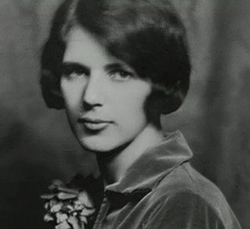Black History Month Feature: Stamford High’s History of Racial Inclusion
In honor of Black History Month, Round Table reporters Melia Peragine, Alexandra Gonzalez and Dea Vashaj used our school’s archive of yearbooks to create a comprehensive look at how racial inclusion has progressed at Stamford High over the last 70 years.
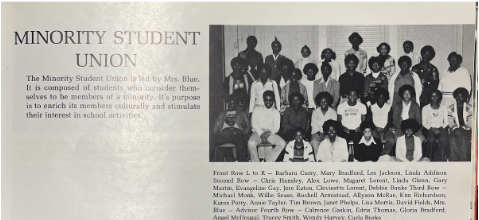
The Minority Student Union in 1977
February 27, 2023
The Progress of Student Inclusion at Stamford High
We began our analysis by assessing the 1941 yearbook from Stamford High School to start our research (due to a lack of any earlier resources). We learned there were 12 black seniors in that year. There were no images of the other grades. The number of black seniors decreased to six in 1942. Six black students out of the 579 members of the class of 1942, or 1.04% of the graduating class, were present in the yearbook.
As we progressed through the years, we saw that while the number of black students attending Stamford High fluctuated naturally, we could see a steady rise over the years. For instance, out of 530 total students, 24 were black in 1946. This is still a contrast to today’s numbers, in which the diversity of our student body has dramatically increased when compared to past classes’ demographics. For reference, 65 of the 335 members of the class of 2023 are black, or 19.5%.
Black students’ involvement in the school community appeared to increase along with the rise in the number of black students enrolled at Stamford High School. Over time, black students joined more and more clubs, teams, and organizations, perhaps as the result of becoming more willing to follow their passions as they began to feel more accepted in the community.
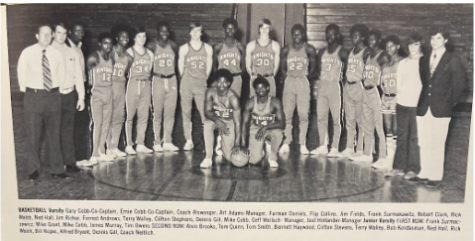
In the 1950s, there was a noticeable rise in the number of black students playing sports at Stamford High, with a preponderance of white players, including baseball, basketball, volleyball, and others. The track team was the first team in our records to include a black student-athlete. In 1957, seven black girls participated in volleyball, 13 in basketball, and 13 in softball. Skip ahead to 1984, and the boy’s varsity basketball team had 14 players, of which 11 were black. Similarly, junior varsity (JV) boys basketball had 10 out of 16 players of color in the same year.
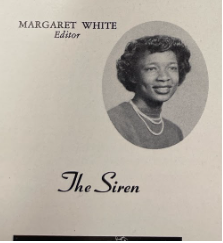
Black students’ participation in clubs and music-related extracurriculars like choir and band increased as well. Margaret White was one of two black students who worked on the school newspaper “The Siren” in 1949, making her the newspaper’s first-ever black editor. Also, the 1957 Class Officers election included a black student president and vice president.
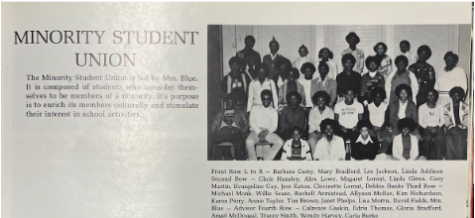
To step up Stamford High’s inclusivity, by 1977, there was a “Minority Student Union.” According to Best Colleges, The Minority Student Union was developed from the Black Campus Movement (BCU) between 1965 and 1972. The first Black Student Union was founded in 1966 at San Francisco State University, but it quickly spread throughout the nation and landed at Stamford High School. Here, it was led by “Mrs. Blue” and according to its mission statement, “It is composed of students who consider themselves to be members of a minority; its purpose is to enrich its members culturally and stimulate their interest in school activities.” At Stamford High in 1977, around 30 students participated, all people of color.
The Progress of Factuality Inclusion at Stamford High
Similarly, we discovered that the number of black faculty members increased over the years.
Our first identified person of color on the Board of Education appeared in 1943. Reverend C.P. Cole stayed in his position until 1945 and no further information was discovered about his whereabouts thereafter.
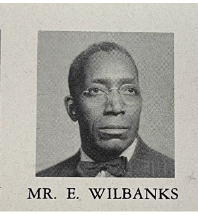
In 1946, E. Wilbanks was hired as the first person of color on the SHS cafeteria staff. He worked there for three years until he transferred to the history department as a teacher in 1949. However, in the following year, Wilbanks returned to the cafeteria staff for an unknown reason until 1951.

The first woman of color to work at Stamford High was Nellie Spears, who joined the mathematics department in 1953. She continued to work in this department for about a decade (1953-1963) while also taking on different leadership roles. In 1957, she was featured as a teacher representative of the Safety Council and later became a senior advisor to the class of 1963. In 1964, Spears became a member of the guidance staff, where she stayed for three more years until 1967 when her career at Stamford High came to an end.
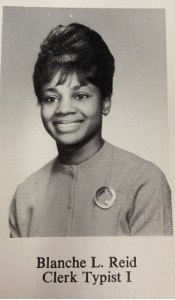
Audrey Clarke became Stamford High’s first black Spanish teacher in 1960. In 1964, Blanche L. Reid joined the office staff as a clerk typist, and three black women began working on the cafeteria staff. The year 1967 showed an increase in staff diversity by employing Marjorie Brown to teach home arts, and Mollie G. Simons as an algebra, general math, and geometry teacher. Six years later in 1973, Simons began to work as a guidance counselor, along with Mildred Merchant, while Rosa Adamson was hired in the physical education department.
Since 1943, there has been a further increase in black teachers and staff; however, this number became temporarily stagnant, with an average of about three teachers and five black staff members until the late 1970s.
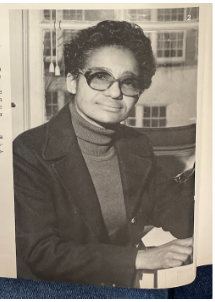
However, great diversity strides were made in 1977 when Dr. Thelma King was appointed as Stamford High School’s first black principal. She stayed in the position until she retired in 1981. During an interview featured in the Stamford High Yearbook in 1977, King responded to questions asked about Stamford High and her time as principal. Specifically, in a question about how she likes Stamford in terms of the community and the school institution, King stated, “The educational system has the potential to be the best. The system has good direction and services. We let personalities and politics get in our way.” It can be inferred that King strived for an equal and less complicated school system.
Stamford’s Steps to Creating A Diverse Learning Community
In 1961, a second high school, Rippowam, opened in Stamford. The Board of Education established a districting system by drawing an east-west line through the city. They decided that students living north of the line would attend Rippowam High, while those living south would attend Stamford High. There was no apparent attempt to achieve racial, ethnic, or socioeconomic balance in their effort to create districts for the students.
During this time, the board intended to integrate schools, but instead accidentally segregated them. Stamford High had a disproportionate number of black and Hispanic students, whereas Rippowam was almost entirely white. According to the Connecticut Advisory Committee, “145 of 157 black high school students were at Stamford High.”
A change was not made until the NAACP recognized the inequity of the new districting policy. To address this problem, the Board of Education approved a recommendation to draw a north-south district line, which was put into effect the following school year. A better racial balance was achieved, and schools are still becoming more integrated today.
According to a report by the Connecticut Advisory Committee to the US Commission on Civil Rights, in 1975, 19,118 students were enrolled in the Stamford public schools, of whom a total of 31.4% were members of minority groups—24.6% black, 6% Spanish-speaking, 0.8% Asian American. In the 10 years from 1965 to 1975, the total enrollment grew from 18,656 students to 19,118, an increase of about 2.5%. The number of black students grew from 2,855 to 4,708, an increase of 64.9%.”
Stamford High’s Black Notable Alumni
Stamford High School has had its fair share of accomplished graduates. Notable black alumni from Stamford High School include:

Craig Marlon Bingham graduated from Stamford High School in the ‘70s. He became the first Jamaican to play in the NFL when he was drafted to play five seasons with the Pittsburgh Steelers, and later the San Diego Chargers.

Garry Wilbert Cobb is a former American football linebacker in the NFL. He played for the Dallas Cowboys, Detroit Lions, and the Philadelphia Eagles. Cobb graduated from Stamford High School in 1975.
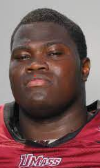
Vladimir Ducasse is a Haitian football player who graduated from Stamford High School in the mid-2000s. He played for the New York Jets in the second round of the 2010 NFL Draft.
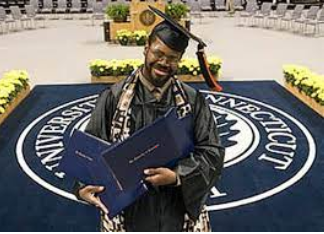
Devin Thomas Gaines graduated from Stamford High in the mid-2000s and attracted media attention in 2007 for receiving five Bachelor’s degrees simultaneously at the University of Connecticut.
Alex Thomas Joseph became a linebacker for the San Francisco 49ers and Green Bay Packers after graduating from Stamford High in the mid-2000s.

Candace Owens graduated from Stamford High in the mid-2000s and became a prominent conservative author, talk show host, political commentator, and producer.
Recent Accomplishments of the Black Community in Stamford Public Schools

The Stamford High School community displays continuous improvement, with the continued increasing diversity of staff and students. Stamford High School’s 2022 yearbook has 14 pictured teachers of color. The 2020-2021 school year also welcomed Superintendent Tamu Lucero, Stamford Public School’s first black female superintendent (our first black superintendent was Jerome Jones, who served from 1981 – 1983). Stamford High School also welcomed a new black dean of students, Jamar Greene, and a new vice-principal, Crystal Perry-Holden.
Despite some of these improvements, there are prevailing issues that haven’t been addressed. For one, AP/ECE/IB classes are predominantly filled with white and Asian students. Stamford High is incredibly diverse, but the school is not seeing enough black students in academically-oriented clubs like student government. There is a sharp divide in what students pursue at Stamford High, and there have not been many efforts made to address it. In the ‘50s and ‘60s, there was a black class president and vice president, however, in recent years there has not been.
Overall, Stamford High School has had strong representation of different ethnicities throughout the years. We have continued to strive for positive incorporations of diversity in our school systems. This continues a trend which started in the 1940s with sports, unions, and leadership roles and continued into the 2000s with the positions of superintendent and various administrators, and with the continuation of inclusive opportunities for students.












